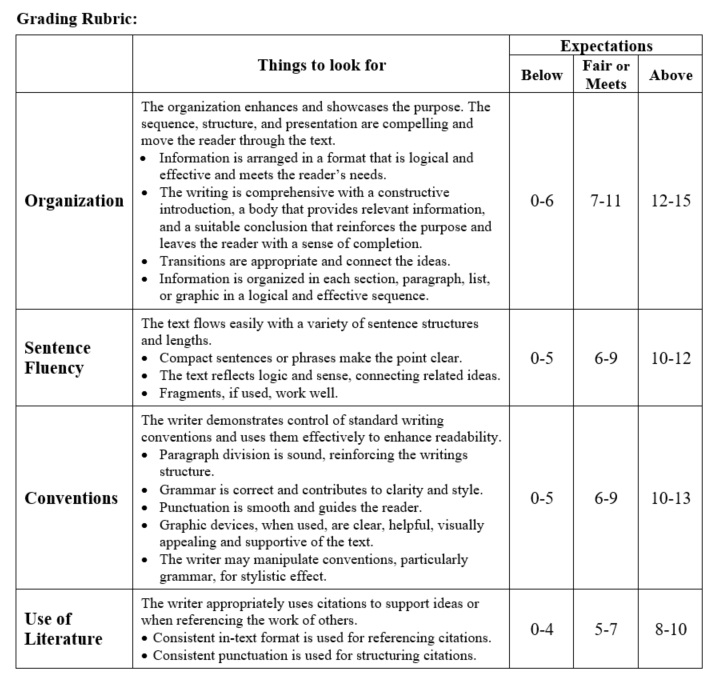NR 421 – Assignment #9
Communicating Natural Resource Sampling Designs
Objective: This assignment will ask you to use quantitative approaches common to most disciplines of natural resource management. This should refresh the use of unit conversions, the relationship of triangle dimensions, and basic principles of measuring tree heights.
Student Learning Outcomes: Upon completing this assignment you will:
Topic: Sample Design Analysis
Overview: Write a brief essay breaking down a sampling design currently being used by a state or federal agency.
Essay Instructions: Your essay is to be completed as an individual and should be typed using 1.5 line spacing and Times New Roman 12pt font. Depending on the complexity of the sampling system you try to describe, your report should be 1.5-3 pages of text. Tables and figures are encouraged if needed, but must be adequately referenced within the text and be accompanied by a descriptive caption. Be sure to cite any reproduced figures according to the literature they originate from. The essay should include the follow elements:
- Title
- Something like “Understanding the [National Park Service Inventory and Monitoring Program] for assessing [blue-footed bubi density]”
- Introduction
- The introduction should be 1-2 paragraphs of 5-6 sentences each. You should use this section to introduce the purpose of the sampling design and the motivations for its development. Additionally, you should discuss any background material relevant to understanding the project.
- Principals and Design
- This should be 2-3 paragraphs including a description of the population and the statistical parameters that the sampling design is intended to capture.
- You should thoroughly describe the entire sampling design including how the population is structured, samples are structured, samples are located, and the types of measurements being collected.
- Additionally, discuss the tradeoffs of using a more statistically or financially efficient sampling design. You should also include a minimum of three citations to support your description of the sampling design and your discussion of efficiency.
- Conclusions
- This section should be 1-2 paragraphs that you use to evaluate and summarize the points of your essay.
- Literature Cited
- At the end of the document use the following citation conventions:
- Peer-reviewed Journals (multiple authors): Carrot, Y.H., Turnip, J.U.H. and Tomato, A.T. (2010). Spectral analysis of mixed vegetables in pies, International Journal of Vegetable Science, 19, 976-983.
- Peer-reviewed Journals (two authors): Carrot, Y.H. and Turnip, J.U.H (2005). Soup mixes: a comprehensive review, International Journal of Soup Science, 14, 245-248.
- Peer-reviewed Journals (single author): Carrot, Y.H. (2005). The role of carrots in the vegetable word, International Journal of Carrots, 14, 245-248.
- Books / Book Chapters: Carrot, Y.H. and Turnip, J.U.H. (2001). The use of potatoes in soup: a review, in “Soups of the World”, Ed. Fried Potatoes, Wiley-Blackwell, pp 67-79.
- Agency Reports: Carrot, Y.H., Turnip, J.U.H., and Tomato, A.T. (2010). Review of soup quality standards within the National Park Services’ cafeterias, NPS report, USA, pp 46
- Websites: Carrot Soup Recipes (2011). Last Accessed 1st January 2011, http://www.101cookbooks.com/archives/carrot-soup-recipe.html
- In the text, use the following citation conventions:
- Carrot (2002)
- Carrot et al., (2002)
- Carrot and Potato (2002)
- At the end of the document use the following citation conventions:

Code of Conduct: Do not copy and paste material from these instructions, papers, or books when writing your essay, the only exception is that graphics and figure may be reproduced with proper citation. Attempt to rewrite in your own words the message you want conveyed and then provide proper citations. Failure to do so will result in a score of 0.
